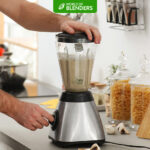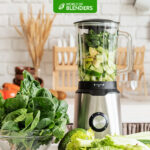This post may contain affiliate links. If you use these links to buy something we may earn a small commission. Thanks.
Blenders are an excellent invention that can be used in a variety of different ways for cooking and food and drink preparation.
Unfortunately, blenders can be incredibly loud. If you aren’t careful you might wake up the whole house while they’re sleeping.
If you’re trying to make your blender quieter, I’ve got you covered. I’ve been testing out different ways to reduce blender noise and these are personally guaranteed to work.
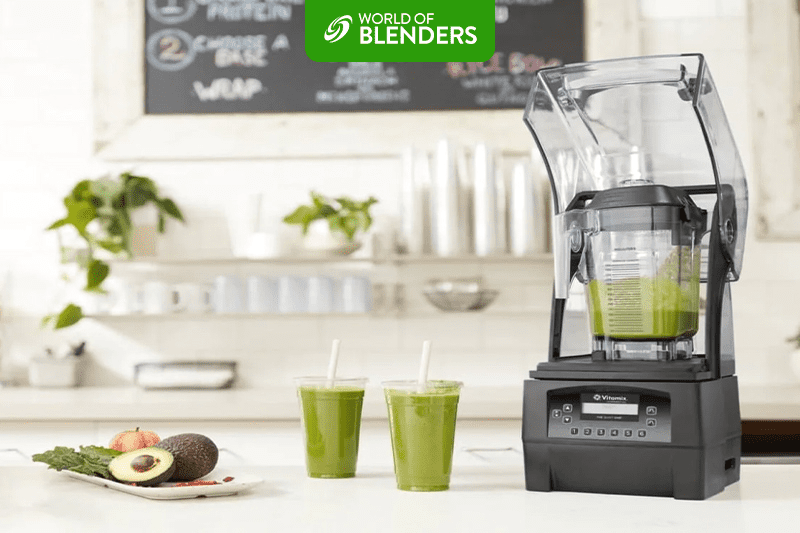
8 Ways to Reduce Blender Noise
Below we will discuss 8 different blender noise reduction techniques, so you will likely be able to find a solution that will suit your home and blender.
1. Place a soft towel underneath
Placing a towel underneath your blender can reduce blender noise significantly. This is one of the most cost-effective ways to reduce blender noise, and it tends to work quite well too.
The reason this solution works so well is due to the fact that blenders are generally always placed on hard surfaces like kitchen countertops. When you operate your blender, it can sometimes vibrate quite violently, depending on the type of blender you have.
By placing a soft towel underneath your blender, you will significantly reduce the vibrations that your blender gives off; this can reduce blender noise by quite a bit but won’t make your blender completely silent by any means.
The thicker the towel you use, the more the noise that your blender makes will be reduced, as it will take longer for the vibrations to reach your hard countertop.
2. Use a soundproof enclosure
If you are willing to go the extra mile, you can actually build a sound enclosure box, or if you don’t have the time or patience, you can buy a sound enclosure box.
This method is far more effective than using a towel and will significantly reduce blender noise. If you decide to build your own enclosure box, you will need either wood, a cardboard box, or some plastic. You just need to make sure that the dimensions of your sound enclosure box will be big enough to house your blender.
You should also ensure to leave one side of your homemade soundproof enclosure box open so that you can still operate your blender while it is in the box.
The reason that this method is so effective is due to the fact that nearly all of the noise that your blender makes will be kept inside the soundproof enclosure, so very little noise will be able to escape and disturb the rest of your household.
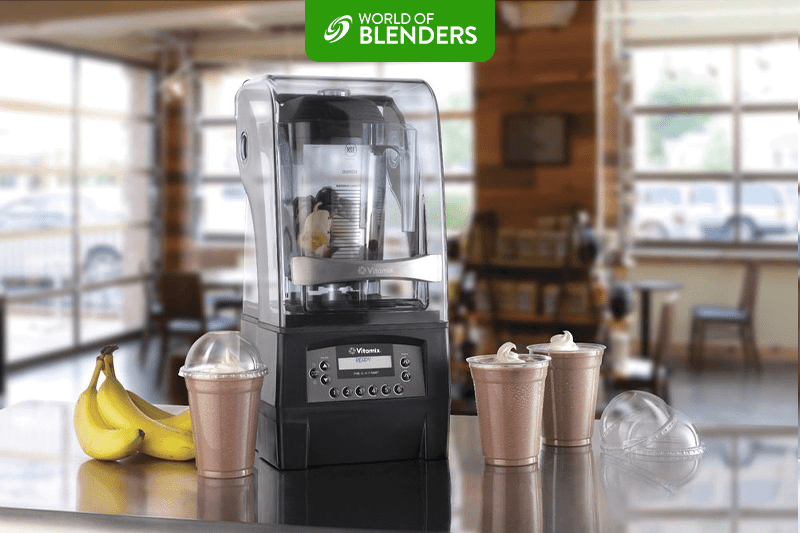
3. Put the blender on a silicone mat
Placing a silicone mat under your blender works in a similar way to placing a towel underneath your blender. It reduces the sound vibrations traveling from your blender onto your hard kitchen countertop, which, therefore, reduces blender noise.
You can also use a rubber mat instead of a silicone mat, as both provide effective barriers between your blender and the hard kitchen countertop. Both materials should diffuse the vibrations better than a towel and will likely keep your blender more balanced, which will also reduce blender noise.
Towels may make your blender sit unevenly on the countertop, which could create some added noise while your blender is operating. If you combine a rubber mat with a soundproof enclosure, you will be able to reduce blender noise massively.
This is due to the fact that the vibrations that cause your blender to make noise will nearly be entirely trapped inside the sound enclosure box, and dampened by the rubber mat at the same time, which could make your blender very close to silent.
4. Wear noise-reducing earmuffs when blending
If the loud noise that your blender makes only seems to bother you, then you don’t need to worry so much about making your blender quieter. You can instead focus on how to block the loud noise of your blender from reaching your ears.
Using noise-reducing earmuffs will certainly stop the noise of your blender from reaching your ears. So if the noise produced by your blender only bothers you and you alone, then noise-reducing earmuffs will likely be the most effective noise reduction option.
Unfortunately, this solution will generally only work for one person, as purchasing noise-reducing earmuffs for your entire household will be quite expensive. Getting everyone in your household to use these noise-reducing earmuffs every time you blend anything may also be quite annoying for them!
5. Opt for a quiet blender
If you are determined to reduce the blender noise in your home and have some extra cash to spare, then it might be a good idea to spend some money on a more expensive silent blender.
While there is no such thing as an entirely silent blender, blenders that are marketed as silent will be far quieter than a cheaper blender.
Blenders are usually measured in decibel levels. Anything under 70 is considered quiet.
Purchasing a silent blender means you will not have to worry about any DIY solutions, as your blender will be rather quiet the way it is. If you want to make your new silent blender even quieter, then you can use some of the above methods to do so.
A more expensive silent blender will likely also last you a very long time, so it is a worthy investment to make if you often blend things in your home and would like to do so as quietly as possible. Check out our list of the quietest Vitamix blenders!
If you do not blend much at once or foods that are difficult to blend, then a less powerful blender will be quieter and often suit your needs better than a more powerful blender. You can also use any of the methods listed here to make your less powerful blender even quieter.
6. Consider blending the day before
If your primary concern involving blender noise relates to disturbing the other people in your home late at night or early in the morning, then you may not even need to worry about any of these solutions.
If you are really concerned about bothering others when blending, then you should only choose to blend what you need to, either when no one is at home or when no one is sleeping in your home.
You should be able to store what you blend in the fridge overnight if you are making a smoothie or protein shake, or if you are using your blender for cooking, perhaps use it before anyone else gets home.
If your blending really annoys the people in your household, you could also choose to do it in an area away from the rest of the house with the door closed. This will reduce the amount of noise that can be heard outside of the room you are blending in by quite a bit, so you will not disturb the other members of your household as much.
If you make them ahead of time, your smoothies will last in the fridge for 3-4 days.
7. Move your blender
When you are blending, the noise that comes from your blender bounces off the walls if it is in an enclosed space, such as underneath your kitchen cupboard in your kitchen. While using your blender right next to an electrical outlet on the wall is the most practical solution, it is not always the quietest. Reducing blender noise could be as simple as moving it.
Moving your blender further away from the wall will not cause as much sound to reverberate off the wall. If you want to take it a step further, you can plug an extension cord into the same electrical outlet that your blender was previously plugged into and then move your blender into the middle of the kitchen.
This will, unfortunately, only slightly reduce the amount of noise that your blender makes, but using this method with some of the other listed methods should prove effective in limiting the total amount of noise that your blender makes.
8. Avoid very cheap blenders
If you buy a blender for very cheap, it would be difficult for you to expect it to operate quietly as well. Cheap blenders are designed with one purpose in mind; to be able to blend food or drinks while using the most cost-effective parts possible.
It is unlikely that a very cheap blender will operate quietly, as the manufacturer never intended it to do so. If you urgently need a blender, don’t have much cash to spend, and want it to be quiet, then your best bet would be to purchase a cheaper blender and make use of some of the solutions listed above.
If you can wait a little longer, then your best bet would be to save up for a more expensive blender or a silent blender if your current blender is still working, as it will save you a lot of time and effort by not having to use many of the methods listed above.
You can also try picking up an immersion blender! They are much quieter than standard blenders and great for puree’s, baby food, curries, or for making soup.
Check out our comparison of a hand mixer vs immersion blender before you buy!
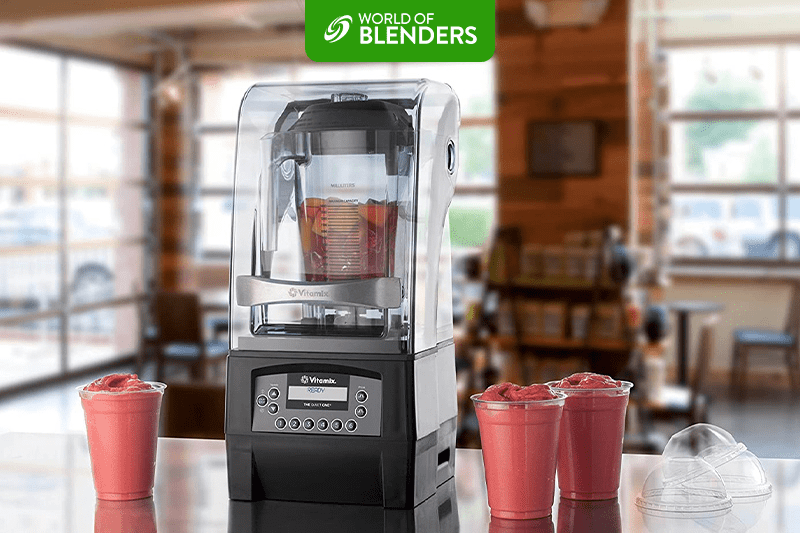
Common Questions About How to Make Blenders Quiet
The most common reasons for a noisy blender include a powerful motor or it being too close to the wall. In general, the more powerful the blender, the noisier it will be. Use our methods above to reduce your blender’s noise!
Yes, there are many blenders that are marketed as being quiet blenders. Many of these blenders are only as loud as having a conversation – definitely worth investing in if the loudness of standard blenders bothers you.
No blender can be entirely silent due to its electric motor. However, if you want a blender that is significantly quieter than others on the market, then a silent blender should be right for you. They will reduce your blender’s noise levels significantly.
Food processors are mostly quieter than blenders because the blades of a food processor often operate much slower than those of a blender, making them quieter. However, it does depend on whether you are comparing silent processors and blenders or regular ones.
Final Thoughts
If your blender has been driving you mad with how loud it is, then thankfully, you have a whole host of different options to choose from when it comes to making it slightly quieter. There are a bunch of different ways to make your blender quieter!
If these blender noise reduction tips don’t work, then you could consider buying a new blender.
If you have the money, a silent blender will be an excellent option, as you can combine it with some of the more cost-effective methods listed above to make it even quieter.
